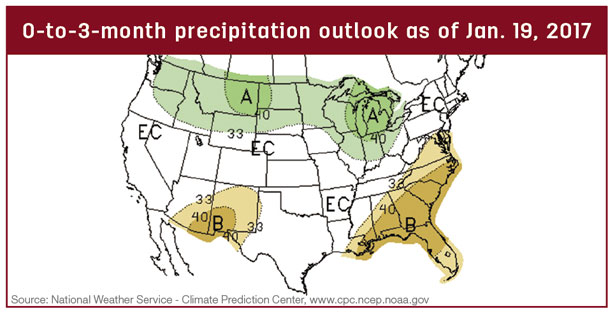Unless a producer has access to a market guaranteeing a sufficient premium for calves and feeders that have not been implanted, this tool should be in their box.
Numerous trials with calves and stockers have been conducted over the last four decades. One implant administered to a nursing calf (45 to 90 days old) increases gain 4 to 8 percent from implanting until weaning. In stocker calves, a single implant increases gain about 15 percent on average.
So a producer can realize an added 10- to 25-pound-per-head weaning weight or an added 20- to 30-pound-per-head stocker gain for the cost of the implant ($1 to $1.50 per head) and some added labor, which is minimal if implants are administered along with vaccinations and other procedures.

Here are a few points to consider for nursing calves and stocker calves:
- Several different implants are available. Read the label instructions and become familiar with the different implants and their intended uses, and select the implant appropriate for the age, gender and weight of the calves.
- Implants are not approved for calves less than 30 to 45 days old. Read the label for the specific implant.
- Do not implant bull calves.
- If a producer can identify replacement heifers on the cow at an early age, then implanting provides no benefit. However, if this is not possible, properly implanting young heifer calves once between 30 and 90 days old poses little risk of impaired reproduction and adds weaning weight for any heifer calves sold at weaning.
- Do not implant potential replacement heifers after weaning.
- The effective life (payout interval) is not the same for all implants. Most have a 75- to 120-day payout interval, but some implants are longer-duration. Select an implant that fits the production window to ensure optimum benefits from the implant.
- To ensure optimum response to the implant, use proper techniques and applicators to ensure correct placement of the implant in the ear. Practice appropriate sanitation – clean the ear, clean the applicator needle, clean your hands – as necessary.
Finally, in today’s world of sustainability, this practice helps reduce the carbon and water footprints of beef production by producing more from the same resources, is safe for the food supply and safe for the calves, and provides economic benefit to producers in the supply chain. ![]()

-
F.T. McCollum III
- Beef Cattle Production Specialist
- Texas A&M AgriLife Extension Service
- Email F.T. McCollum III







